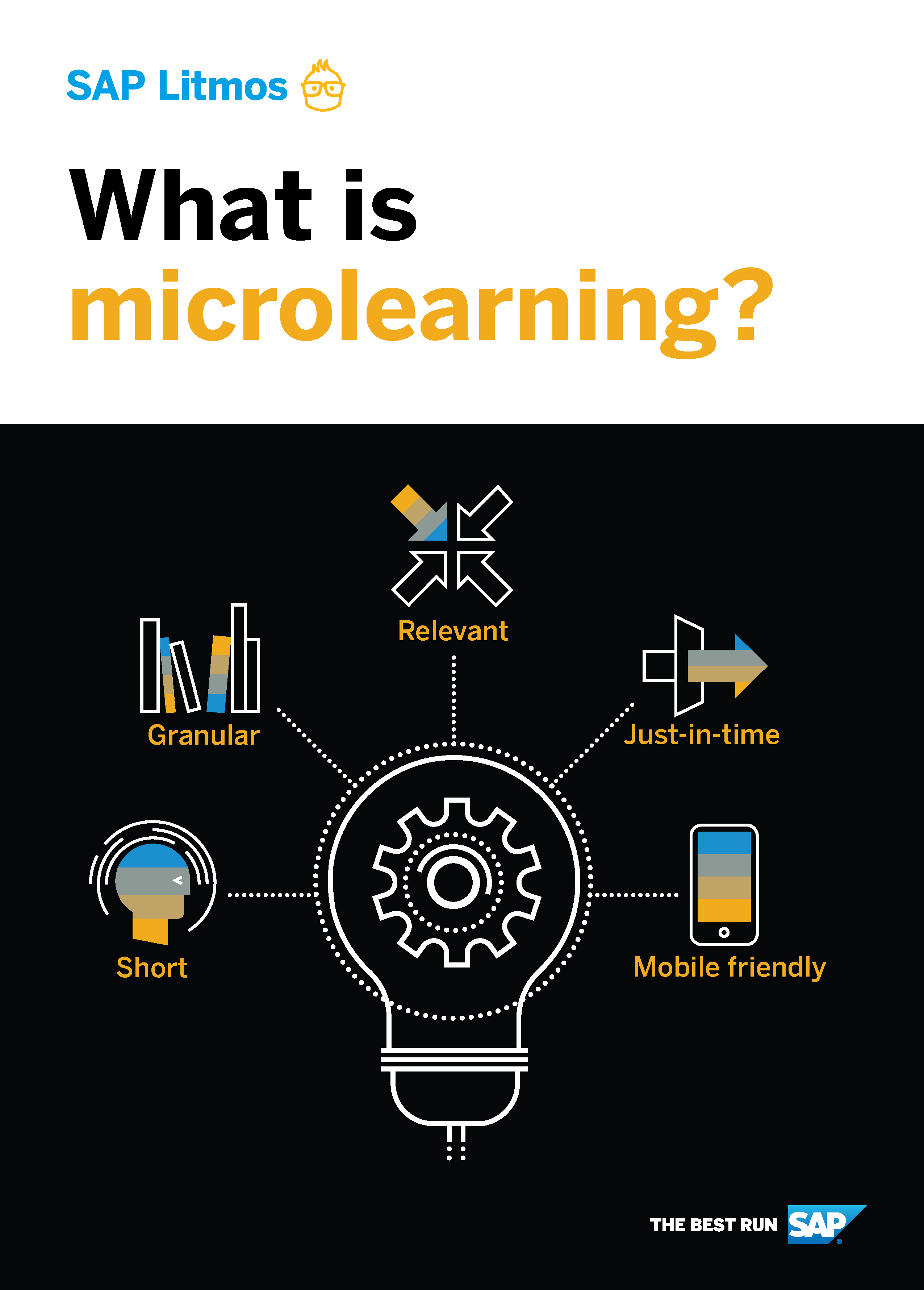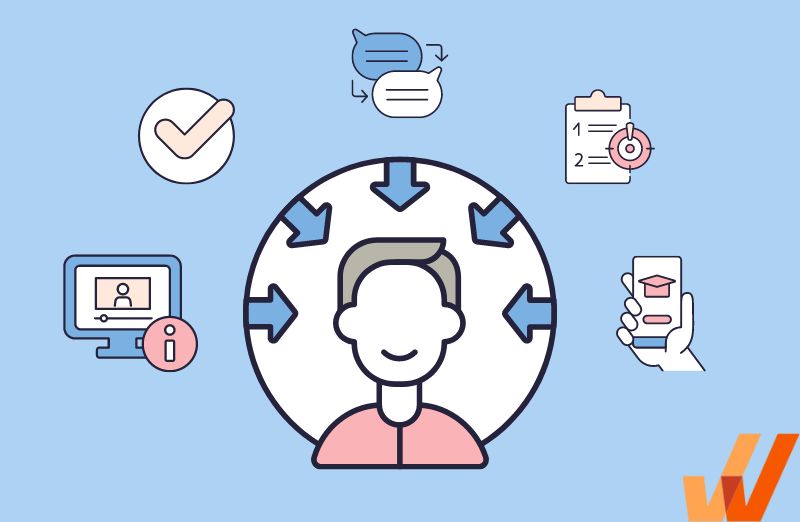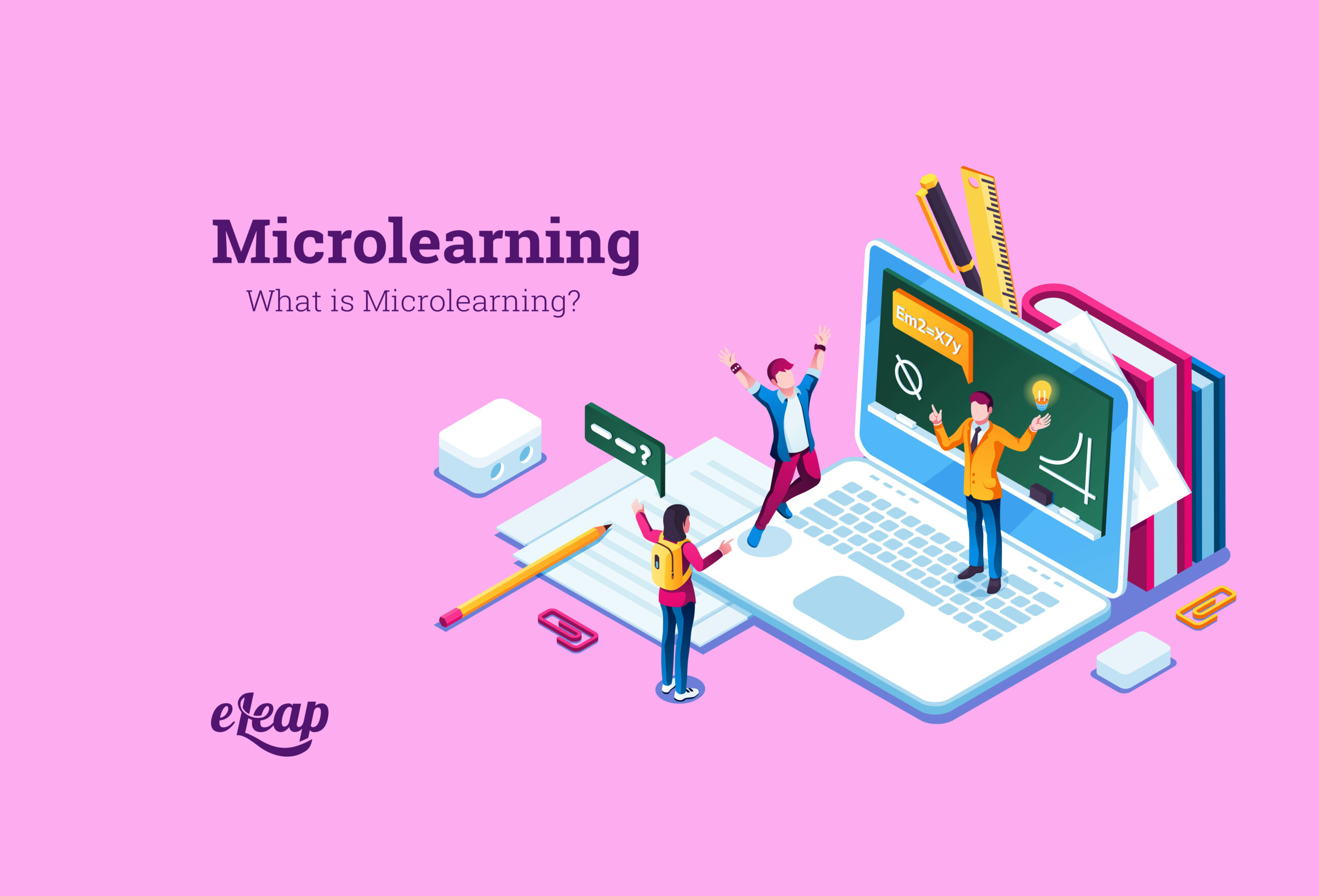What is Microlearning?
Microlearning is a method of delivering small, focused pieces of information to learners. It allows for bite-sized learning that can be consumed quickly and easily.
By breaking down complex topics into smaller units, microlearning helps learners absorb and retain knowledge more effectively. This approach is especially popular in today’s fast-paced world where people have limited time for lengthy training sessions. By enabling learners to access information in short bursts, microlearning supports flexible learning schedules and improves information retention.
Microlearning can be delivered through various formats, including short videos, infographics, quizzes, and interactive modules, making it a versatile and effective tool for modern learners.

Credit: www.litmos.com
The Definition Of Microlearning
Microlearning is a concise and focused learning approach that delivers information in small, bite-sized chunks. It allows learners to quickly acquire knowledge and skills in a flexible and efficient manner.
Microlearning, as the name suggests, is a learning approach that focuses on delivering small, bite-sized chunks of information to learners. It involves breaking down complex topics into easily digestible modules, ensuring maximum retention and understanding. Microlearning is characterized by its short duration, typically ranging from a few minutes to no longer than ten minutes. It can be delivered through various digital formats, such as videos, interactive quizzes, infographics, podcasts, or even text-based modules. This type of learning has gained significant popularity due to its ability to fit into busy schedules and its effectiveness in meeting learners’ implicit needs. Now, let’s delve into the key principles and benefits of microlearning.Key Principles Of Microlearning
When it comes to microlearning, there are several key principles that guide its design and implementation: 1. Focus on a single objective: Each microlearning module should have a specific and clearly defined learning objective, ensuring learners can grasp the intended concept or skill efficiently. 2. Brevity: Microlearning emphasizes short, condensed content that can be consumed quickly. By focusing on one topic or concept at a time, learners can easily understand and retain information. 3. Engagement: Microlearning modules are designed to be engaging and interactive, capturing and maintaining learners’ attention. This boosts motivation and enhances the overall learning experience. 4. Relevance: Microlearning content is targeted and customized to address specific learning needs. By aligning with learners’ interests and goals, it enhances their motivation and increases knowledge retention.Benefits Of Microlearning
Implementing microlearning in your training programs can bring about several significant benefits: 1. Time-efficient: With its focus on short and concise modules, microlearning allows learners to acquire knowledge or skills in a shorter time compared to traditional learning methods. 2. Flexibility: Microlearning is highly flexible in terms of when and where learners can engage with the content. Its mobile-friendly nature allows for learning on the go, making it convenient for busy professionals. 3. Higher retention: The compact nature of microlearning promotes better knowledge retention as learners can effectively digest and review the content repeatedly. 4. Personalized learning: Microlearning enables customization and individualization of learning experiences based on learners’ preferences and needs, ensuring a more personalized approach. 5. Cost-effective: Microlearning requires less time and resources to develop compared to traditional training methods. Its modular approach allows organizations to update content easily and incorporate new information. By adhering to these principles and leveraging the benefits of microlearning, organizations can revolutionize their training programs, enhancing knowledge acquisition, and promoting continuous learning.Types Of Microlearning
Microlearning is an effective learning strategy that involves bite-sized learning modules designed to meet specific learning outcomes. There are various types of microlearning, each offering unique benefits and methods of delivery. Below, we’ll explore the different types of microlearning and how they can be utilized to facilitate efficient learning.
Video-based Microlearning
Video-based microlearning involves the delivery of short, focused video content to convey specific learning objectives. These videos are designed to be concise and engaging, making them an ideal choice for learners with limited time. Video-based microlearning is highly effective in delivering visual and auditory information, making complex concepts easy to comprehend.
Interactive Quizzes
Interactive quizzes are a popular form of microlearning that allows learners to test their knowledge in an interactive and engaging manner. By integrating questions, quizzes, and assessments into the learning process, learners can reinforce their understanding of key concepts while receiving immediate feedback. Interactive quizzes promote active participation and enhance retention of information.
Micro-games And Simulations
Micro-games and simulations offer an immersive and experiential learning experience, allowing learners to apply newly acquired knowledge in a simulated environment. These interactive formats provide a practical and engaging way for learners to practice skills, problem-solving, and decision-making. Micro-games and simulations are particularly effective for creating a hands-on learning experience.
How Microlearning Works
Chunking Information
Microlearning involves breaking down learning material into smaller, easily digestible pieces, known as chunks. Each chunk focuses on a specific learning objective, allowing learners to absorb information more effectively.
Delivering Just-in-time Learning
With microlearning, learners receive targeted and concise content precisely when they need it, enhancing knowledge retention and application. This approach ensures that learners can access relevant information promptly, improving overall learning outcomes.

Credit: whatfix.com
Implementing Microlearning In Organizations
Organizations are always searching for effective ways to train and develop their employees. One popular method that has gained attention in recent years is microlearning. This approach breaks down learning content into small, easily digestible chunks, making it more accessible and convenient for learners. In this article, we will explore the key steps involved in implementing microlearning in organizations to enhance employee training and improve overall performance:
Identifying Learning Objectives
Before implementing microlearning, it is crucial to identify the specific learning objectives you want to achieve. This involves analyzing the training needs of your organization and understanding the desired outcomes. Are you aiming to improve product knowledge, enhance soft skills, or develop leadership abilities? By clearly defining the objectives, you can tailor your microlearning content to address these specific needs.
Creating Bite-sized Content
Microlearning thrives on delivering information in short, concise bursts that are easy for employees to consume and retain. When creating bite-sized content, focus on delivering one key concept per module. This could include short videos, infographics, quizzes, or interactive simulations. By keeping the content brief and engaging, learners can quickly grasp the information and apply it to their work. Additionally, break down larger topics into smaller modules and offer them in a progressive sequence to ensure a smooth learning journey.
However, it is important to strike a balance and avoid overloading employees with an excessive amount of microlearning modules. Be selective in choosing the most relevant and impactful content for each learning objective to maximize the effectiveness of the program.
Best Practices For Designing Microlearning Programs
When it comes to designing microlearning programs, following best practices is crucial to ensure effective learning outcomes. By incorporating user-centered design, feedback and assessment, trainers can create engaging and impactful microlearning experiences. Let’s delve into these best practices:
User-centered Design
User-centered design is the foundation for any successful microlearning program. By understanding the target audience’s needs, preferences, and constraints, trainers can tailor content specifically for them. Here’s how this practice can be incorporated:
- Create learner personas to gain insights into their characteristics and learning goals.
- Analyze performance gaps to identify the specific skills or knowledge that need to be addressed.
- Use visually appealing and intuitive interfaces to enhance engagement and navigation.
- Chunk content into manageable and concise modules to optimize retention and comprehension.
- Provide multiple formats, such as videos, infographics, or quizzes, to cater to different learning styles.
Feedback And Assessment
Feedback and assessment are vital components of microlearning programs as they promote continuous improvement and reinforce learning. Here are some strategies to consider:
- Provide immediate feedback after each microlearning module to reinforce correct understanding and address misconceptions.
- Include interactive assessments, such as quizzes or simulations, to gauge learners’ progress and knowledge retention.
- Offer personalized remediation pathways for learners who require additional support or struggle with certain concepts.
- Enable self-assessment tools to encourage learners to reflect on their own progress and identify areas for improvement.
- Regularly analyze learner data and feedback to identify trends, measure program effectiveness, and make necessary adjustments.
By incorporating user-centered design and implementing robust feedback and assessment mechanisms, trainers can create microlearning programs that are tailored to learners’ needs and promote ongoing growth and development. Implementing these best practices will ensure that microlearning initiatives are effective, engaging, and valuable in supporting learners’ goals.
Credit: raccoongang.com
Frequently Asked Questions On What Is Microlearning?
What Is Meant By Microlearning?
Microlearning refers to the delivery of small, bite-sized chunks of information or learning content. It allows learners to access short, focused lessons that are easy to digest and retain. The approach is effective for enhancing knowledge and skills in a concise and efficient manner.
What Is The Difference Between Micro Learning And Elearning?
Micro learning typically consists of short, focused bursts of learning content, while eLearning covers a broader range of topics and formats. Micro learning aims to deliver specific learning objectives in small, digestible units, whereas eLearning encompasses a wider array of educational materials and methods.
How Do I Start Microlearning?
To start microlearning, choose a topic, set goals, select bite-sized content, use a variety of media, and track progress.
Conclusion
To sum up, microlearning offers a modern and effective approach to learning, catering to the fast-paced lifestyle of individuals today. By breaking down complex topics into bite-sized, easily digestible modules, microlearning provides learners with the flexibility and convenience they need to acquire new knowledge and skills.
Its mobile-friendly nature enables learning on the go, promoting continuous development and growth. Harnessing the power of microlearning can empower individuals and organizations alike, leading to enhanced performance and success in the digital age.






